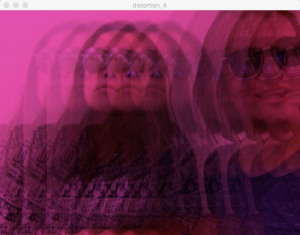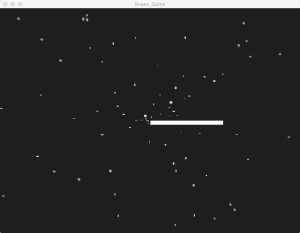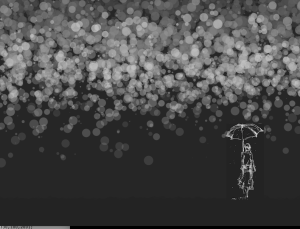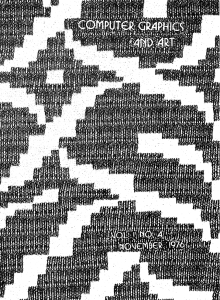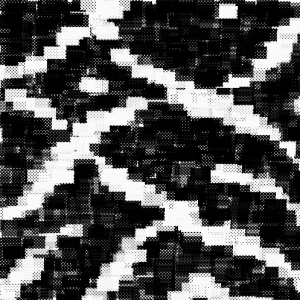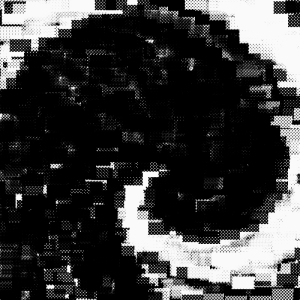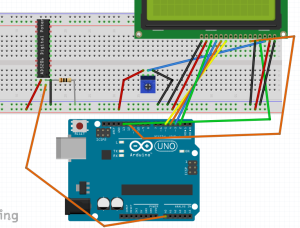Discussion of my work process and how I worked out all my designs:
import processing.serial.*;
Serial myPort;
Draw myDraw;
Pulse myPulse;
Random myRandom;
Stretch myStretch;
ArrayList<Sphere> mySphere;
ArrayList<Flow> flows;
boolean ellipse = true;
float values ;
float xPos;
float yPos;
float prevValues = 0;
void setup() {
background(0);
fullScreen(P3D);
// size(800, 800, P3D);
myDraw = new Draw(width/2,width/2);
myPulse = new Pulse(width/2,height/2);
myRandom = new Random(width/2,height/2);
myStretch = new Stretch();
mySphere = new ArrayList<Sphere>();
flows = new ArrayList<Flow>();
String portName = "/dev/cu.usbserial-DA01LJI0";
myPort = new Serial(this, portName, 9600);
myPort.bufferUntil('\n');
}
void draw() {
noCursor();
println(values,xPos,yPos);
if (values == 0) {
central();
}
if (values == 3) {
ellipse = false;
disco_ball();
}
if (values == 5) {
myDraw.shape_draw();
myDraw.update(xPos,yPos);
ellipse = false;
}
if (values == 7) {
ellipse = false;
myStretch.stretch();
myStretch.update(xPos,yPos);
}
if (values == 9) {
ellipse = false;
myPulse.pulse();
myPulse.update(xPos,yPos);
}
if (values == 11) {
ellipse = false;
myRandom.random_circle();
myRandom.update(xPos,yPos);
}
if (values == 13) {
ellipse = false;
flows.add(new Flow());
for (int i = flows.size()-1; i>=0; i--) {
Flow s = flows.get(i);
s.update(xPos,yPos);
s.render();
if (s.isDead()) {
flows.remove(i);
}
}
}
if (values == 15) {
ellipse = false ;
myPulse.pulse();
myPulse.update(xPos,yPos);
}
if (values != prevValues){
clear();
}
prevValues = values;
}
void central() {
pushMatrix();
background(0);
noFill();
stroke(255);
strokeWeight(1.5);
ellipse(width/2, height/2, 300, 300);
popMatrix();
}
void serialEvent(Serial myPort) {
String inString = myPort.readStringUntil('\n');
inString = trim(inString);
String[] james = split(inString, ',');
if (james[0] != null) {
values = float(trim(james[0]));
}
//X position
if (james[1] != null) {
james[1] = trim(james[1]);
xPos = float(james[1]);
// println(xPos);
xPos = map(xPos,0,1023,0,width);
}
//Y position
if (james[2] != null) {
james[2] = trim(james[2]);
yPos = float(james[2]);
yPos = map(yPos,1023,0,100,height-100);
}
myPort.write('x');
}
void disco_ball(){
pushMatrix();
background(0);
translate(width/2,height/2,0);
mySphere.add(new Sphere());
for (int i = mySphere.size()-1; i>=0; i--) { // manipulate the objects
Sphere s = mySphere.get(i);
s.update(xPos,yPos);
s.render();
if (s.isDead()) {
mySphere.remove(i);
}
}
popMatrix();
}
ArrayList<Sphere> spheres;
class Sphere {
float xPos;
float yPos;
float xSpeed;
float ySpeed;
float diam;
float alpha;
float moving_x;
float moving_y;
Sphere() {
alpha = random(127, 350);
xPos = width/4-475;
yPos = height/4-300;
xSpeed = random(-10., 10.);
ySpeed = random(-10., 10.);
diam = 150;
}
boolean isDead() {
if (alpha <= 0) {
return true;
} else {
return false;
}
}
void render() {
strokeWeight(2);
alpha -=3;
diam = diam-3.5;
float yellow = map(diam,100,200,255,0);
float interesting = map(moving_y,0,height,yellow,0);
stroke(255, 255,interesting,alpha);
float cool = map(moving_x,0,width,0,255);
fill(0,cool);
pushMatrix();
translate(xPos,yPos,yPos);
sphere(diam);
popMatrix();
}
void update(float x, float y) {
moving_x = x;
moving_y = y;
xPos+=xSpeed;
yPos+=ySpeed;
}
}
class Draw {
int num_vertex;
float radius;
float centerX;
float centerY;
float Xmove;
float Ymove;
float[] x = new float[num_vertex];
float[] y = new float[num_vertex];
float angle = radians(30);
Draw(float _x,float _y) {
Xmove = _x;
Ymove = _y;
smooth();
noFill();
centerX = width/2;
centerY = height/2;
num_vertex = 12;
radius = 150;
}
void update(float xPos,float yPos){
Xmove = xPos;
Ymove = yPos;
}
void shape_draw() {
noFill();
stroke(0);
strokeWeight(1);
ellipse(width/2, height/2, 300, 300);
for (int i=0; i<num_vertex; i++) {
x = append(x, cos(angle*i) * radius);
y = append(y, sin(angle*i) * radius);
}
stroke(255, 255, random(0, 250), 80);
if (Xmove != 0 || Ymove != 0) { //WHERE I CHANGED OUT THE MOUSE X AND Y
centerX += (Xmove-centerX) * 0.05;
centerY += (Ymove-centerY) * 0.05;
}
for (int i=0; i<num_vertex; i++) { // cause random movements for verteces within these parameters
x[i] += random(-1.25, 1.25);
y[i] += random(-1.25, 1.25);
}
beginShape();
curveVertex(x[num_vertex-1]+centerX, y[num_vertex-1]+centerY);
for (int i=0; i<num_vertex; i++) { // for every vertex make a point about the center
curveVertex(x[i]+centerX, y[i]+centerY);
}
curveVertex(x[0]+centerX, y[0]+centerY);
curveVertex(x[1]+centerX, y[1]+centerY);
endShape();
}
}
class Flow {
// variables for the object
float xPos;
float yPos;
float xSpeed;
float ySpeed;
float alpha;
float size;
float moving_x;
float moving_y;
Flow() {
background(0);
alpha = random(0, 255);
xPos = 0;
yPos = 0;
xSpeed = random(-20,20);
ySpeed = 20;
}
boolean isDead() {
if (alpha <= 0) {
return true;
} else {
return false;
}
}
void update(float new_x, float new_y) {
moving_x = new_x;
moving_y = new_y;
xPos+=xSpeed;
yPos+=ySpeed;
}
void render() {
fill(0);
noStroke();
ellipse(width/2,height/2,300,300);
alpha -=1;
size +=1;
fill(255,255,alpha,alpha);
for(float a = 0; a <=width;a=a+100){
pushMatrix();
float rotationx = map(moving_x,0,width,-PI/8,PI/8);
float rotationy = map(moving_y,0,height,-PI/8,PI/8);
rotateX(rotationx);
rotateY(rotationy);
ellipse(xPos+a,yPos,size,size);
popMatrix();
}
}
}
class Pulse {
float parameter_x;
float parameter_y;
float movex;
float movey;
Pulse(float movementsx, float movementsy){
movex = movementsx;
movey = movementsy;
}
void update(float xPos,float yPos){
movex = xPos;
movey = yPos;
}
void pulse(){
if((xPos <970 && xPos>964) &&(yPos<538 && yPos>534)){
parameter_x = random(50,350);
parameter_y = height/2;
}else{
parameter_x = movex;
parameter_y = movey;
if(parameter_x > 350){
parameter_x = 300;
}
}
pushMatrix();
smooth();
frameRate(15);
strokeWeight(2.5);
stroke(255,255,random(0,300));
pushMatrix();
fill(0,20);
rect(-100,-100,width+200,height+200);
popMatrix();
translate(width/2,height/2);
int resolution = (int)map(parameter_y,100,height-100,2, 30);
float radius = parameter_x-width/2+400;
float angle = TWO_PI/resolution;
beginShape();
for (int i=0; i<=resolution; i++){
float x = cos(angle*i) * radius;
float y = sin(angle*i) * radius;
vertex(x, y);
}
endShape();
popMatrix();
}
}
class Random{
float x_go;
float y_go;
Random(float movementx,float movementy){
x_go = movementx;
y_go = movementy;
}
void update(float xPos,float yPos){
x_go = xPos;
y_go = yPos;
}
void random_circle(){
smooth();
background(0);
frameRate(45);
pushMatrix();
fill(0,50);
rect(0,0,width,height);
popMatrix();
noStroke();
float fadeX = (float)x_go/width;
float angle = radians(360/float(300));
for (int i=0; i<300; i++){
float circleX = width/2 + cos(angle*i)*150;
float circleY = height/2 + sin(angle*i)*150;
float randomX = random(0,width);
float randomY = random(0,height);
float x = lerp(randomX,circleX, fadeX);
float y = lerp(randomY,circleY, fadeX);
float blue = map(y_go,0,width-50,0,255);
fill(255,255,blue,200);
ellipse(x,y,random(0,20),random(0,20));
}
}
}
class Stretch{
float xmove;
float ymove;
void update(float xPos,float yPos ){
xmove = xPos;
ymove = yPos;
}
void stretch(){
background(0);
strokeCap(SQUARE);
smooth();
noFill();
float rotationx = map(xPos,0,width,-PI/6,PI/6);
float rotationy = map(yPos,0,height,-PI/6,PI/6);
rotateX(rotationx);
rotateY(rotationy);
float blue = map(xPos,0,width,0,240);
stroke(255,255,blue,100);
translate(width/2,height/2);
int circleResolution = (int) map(yPos, 0,height, 50,120);
float radius = xPos-width/2 + 50;
float angle = TWO_PI/circleResolution;
strokeWeight(yPos/80+5);
beginShape();
for (int i=0; i<=circleResolution; i++){
float x = cos(angle*i) * radius;
float y = sin(angle*i) * radius;
rect(0,0,x,y);
line(0,0,x,y);
}
endShape();
}
}
4 of my demos in video:

